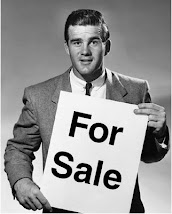Yes it is, it really is....
Selling professional services is different to selling ‘stuff’. You are selling an intangible, a relationship, trust. I’ve seen the greatest salesman in the world reduced to blubbering wrecks as they try to close a consulting sale whereas some of the most introverted analysts within my organisation make great salesmen; simply by knowing their stuff and earning the trust of their clients. Why is it so difficult for salesmen to sell consultancy? They are selling trust in someone else and that can be a bit of a reach – it can be done and representing a brand that has been built on trust gets you more than half way there.
Within the world of PSF, a common problem is that the best sellers (or business developers, if the phrase selling is making you uncomfortable) are the same people who are often the best at executing and delivering the work sold. The very reason clients buy the work is that the consultant can demonstrate in real time the competency in doing the work.
“You can’t bullshit the bullshitters” – so this book won’t pretend that selling professional services is easy; it isn’t and real success will only come to those who work really hard. The objective of this handbook is to help competent consultants or other purveyors of professional services become better at selling (whoops, I mean business development).
Selling at the right level
“He doesn’t want to talk to me…”
How do you play the conversation with the major client, you are at the conference and believe it or not, there is the CEO of a target client, sipping coffee and enjoying some quiet time. What do you do?
We are back to relationships but the relationship with the CEO of a major client target may be the last person to see your proposal but he may read a cost report that discusses your £100k or £1million proposal so it would help if your company’s name conjured up some pleasant memories in his head.
When you get the opportunity to talk to the CEO be interested (don’t try to be interesting, and certainly not sycophantic!). Be friendly and ask questions about his business, preferably around a business that you understand. Yes, you do need to prepare for such meetings – if you attend a conference and the attendee list is available and you haven’t studied it then you missed the bit above when I said success comes to those who work really hard.
It’s relatively easy to practice opening lines and attempts at introducing the subjects where you can add value. However, if the ‘target’ gets chatty and goes off script then don’t push it but go with the flow, practice active listening and wait for him to ask you a question about you and your company and then deliver your practiced 15 second introduction that is guaranteed to make him ask you another question! You have started along the route of making a sale….
Example:
“As a COO I was comfortable with divisional managers of major companies, I considered myself their peers. For the billion dollar company CEOs, I was respectful and took my selling patter down a couple of notches. Why? Because these guys get sold to all the time and, at social occasions they don’t want to hear your elevator pitch”
Subscribe to:
Post Comments (Atom)




No comments:
Post a Comment